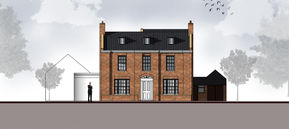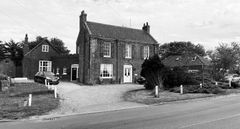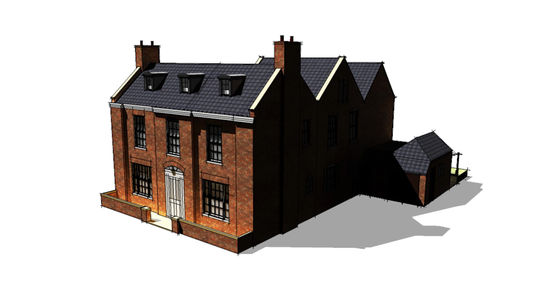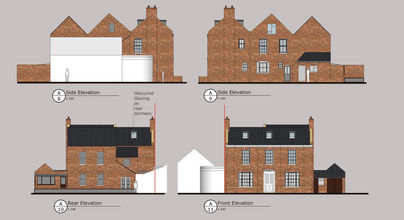
Planning Consultancy:
Property sub-division and the Planning System
This interesting field of planning and property development will allow you to create new planning units within existing buildings and thereby increase either rental yield or overall value of the building by producing more units. It might take different forms such as:
• Conversion and change of use of existing non-residential buildings and vacant properties into dwellings;
• Subdivision of existing houses into maisonette and/or flats;
• Conversion of accommodation above shops into flats.
Property subdivision generally requires planning permission from the local planning authority. This involves submitting a planning application that outlines the proposed development, including the number and layout of the new units, access roads, landscaping, and any other relevant details. The planning authority will assess the application against local planning policies and consider factors such as impact on the local area, infrastructure, and amenity.
Adequate space is a pre-requisite for basic living. There should be enough room for residents to cook, eat, relax and socialise. This standard deals with internal space within new dwellings and is suitable for application across all tenures. It sets out requirements for the Gross Internal (floor) Area of new dwellings at a defined level of occupancy as well as floor areas and dimensions for key parts of the home, notably bedrooms, storage and floor to ceiling height. 2. The requirements of this standard for bedrooms, storage and internal areas are relevant only in determining compliance with this standard in new dwellings and have no other statutory meaning or use. The National Space Standards outline these requirements for new housing development.
With sympathetic alterations to the exterior of the existing buildings, conversion is likely to have a lower visual impact on the street scene by preserving the existing building frontage and respecting the character of the
area. It should be noted that property sub-division does not just apply to residential but commercial development as well and we have work on projects to sub-divide a larger commercial unit to allow for smaller units and business to occupy the units and allow more flexibility for the owners.
However, unsatisfactory conversion work can result in accommodation which is of an inadequate size and poor quality. The occupants could be exposed to a number of potential problems, such as overlooking, poor outlook,
overcrowding and lack of amenity space, inadequate light, noise and disturbance from neighbouring premises, and inconvenient and unsafe access.
Building Regulations and Property Sub-division.
Once planning permission has been granted, building regulations come into play to ensure that the construction work meets certain standards. Building regulations cover various aspects of the development, including structural stability (Approved Document A), fire safety (Approved Document B), accessibility, energy ef ficiency (Approved Docuemnt L), ventilation, drainage, and electrical and plumbing installations. Compliance with the building regulations is typically required for each individual unit within the subdivision. Party Wall Act: If the subdivision involves building or modifying a shared wall (known as a party wall) with an adjacent property, the Party Wall Act 1996 applies. The Act sets out the requirements for serving party wall notices, reaching agreements with adjacent property owners, and resolving disputes. Subdivisions may require new or modified access points and roads. The local highway authority will have requirements regarding access design, visibility splays, road widths, and parking provision. Compliance with these requirements is necessary to ensure safe and suitable access for the new units. Subdivisions often require connections to water, gas, electricity, and sewage services. The relevant utility providers will have their own requirements and specifications for connections, meters, and infrastructure.
Case Study: The Cornerhouse, Hunstanton, Norfolk - Creation of new holiday let by subdivision of the existing unit. Addition of new dormer windows and dwarf wall to the fore. Increase in size of patio area to the rear.
Full planning permission was sought for the subdivision of an existing bed and breakfast/dwelling to allow use as one self-contained holiday let alongside assocated dwellinghouse. Dormer windows are proposed alongside internal alterations.
The site is located off Cromer Road, Old Hunstanton and comprises a Grade II Listed Building and it's curtilage. The application site is wholly within the Development Boundary for Old Hunstanton as outlined on inset map G67 of the SADMPP (2016) of the North Norfolk Local Plan. Hunstanton is a seaside town located on the Norfolk coast in eastern England. The history of Hunstanton stretches back thousands of years, with evidence of human activity in the area dating back to the prehistoric era. Archaeological discoveries in and around Hunstanton indicate that the area has been inhabited since the Mesolithic period, around 10,000 BC. Stone tools and other artifacts have been found, suggesting that early hunter-gatherer communities lived in the region. The Romans established a presence in the area during the 1st century AD. In recent decades, Hunstanton has continued to thrive as a popular seaside resort, attracting tourists with its sandy beaches, distinctive striped cliffs, and traditional seaside attractions.
Access is proposed to be retained as existing, with a dual-access driveway to Cromer Road. The existing parking area to the front of the building will be improved to allow further space for vehicles to park.
The existing building was most recently in use as a Bed and Breakfast with associated owners' accommodation. According to information available to the LPA, up to six bedrooms were let at any one time. The proposal seeks consent to change the use parts of the dwelling previously used as the B&B to allow use as one self-contained holiday let. The proposed holiday let use is considered to give rise to fewer vehicle movements than the unrestricted bed and breakfast and therefore has no detrimntal imapct upon highways and access in the locality.
External alterations include the addition of dormers to the front roof slope and replacement of dormer windows to the rear. An existing patio space will be extended to the rear of the dwelling. The remaining alterations are internal and include the creation of a hidden bookcase doorway to subdivide the units. The submitted architectural visualisation has shown the suitability of the design.
With the previous bed and breakfast use generating high levels of traffic, the proposed holiday let is not considered likely to lead to highways impacts to an extent that would warrant refusal. The use of the front of the site as a single holiday let, when combined with the retained owners accommodation to the rear, is unlikely to exceed the historic levels of traffic associated with the unrestricted B&B use. For the avoidance of doubt, a condition was recommended to ensure compliance with the traffic management plan submitted as part of this application. Wuth the attachment of said conditon the Plannig Authority concluded there was no detriemntal impact upon highways and access in the locality.
Overall, the development is considered to comply with the NPPF (2021), Policies CS08, CS10 and CS12 of the Core Strategy (2011) and Policies DM11 and DM15 of the Site Allocations and Development Management Policies Plan (2016) and permission was granted.
How En-Plan can assist you with Proeprty Sub-division
En-Plan have extensive experience in this field and can provide you with full working drawings for any property sub-division project and thereby allow you to get accurate quotations from Builders and give you the knowledge that you are working to an approved specification. Please refer to our Planning Consultancy and architectural services pages for more information.











